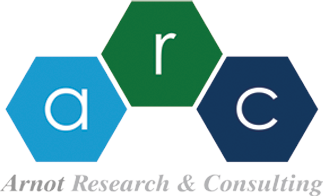Research Associate
Arnot Research and Consulting Inc Toronto, ON Canada2020-Present
Postdoctoral Fellow
University of Toronto Scarborough Toronto, Canada2019-2020
Mitacs Elevate Postdoctoral Fellow
Academic Supervisor: Prof. Frank Wania
Partner Organization: Arnot Research and Consulting Inc, Dr Jon Arnot
Project: A mass balance modelling framework for chemicals and their primary metabolites for ecological and human health assessment
Research Fellow
University of Insubria Varese, Italy10/2018 – 01/2019
Scientific Supervisor: Prof. Ester Papa
Project: Database implementation, data analysis and QSAR modelling of biotransformation related endpoints in mammals in support of CEFIC LRI ECO44 Project iBAT-Mam
- Development, application and integration of QSAR models and related predictions in a framework for the estimation of bioaccumulation in mammals.
- Preparation of scientific manuscripts, reports and material for conferences.
- Supervision of Master students.
Research Fellow
University of Insubria Varese, Italy01/2014 – 06/2015
Scientific Supervisor: Prof. Paola Gramatica
Project: Development of QSAR models for the environmental hazard estimation of emerging pollutants
- Development, validation and application of QSAR models for the study of persistency, bioaccumulation and toxicity of pharmaceuticals and personal care products.
- Preparation of scientific manuscripts and material for conferences
13. Gramatica Paola, Papa Ester, Sangion Alessandro. “QSAR Modeling of Cumulative Environmental End-Points for the Prioritization of Hazardous Chemicals”. Environmental Science: Processes & Impacts, 2018, 20 (1): 38–47. doi.org/10.1039/C7EM00519A
12. Papa Ester, Sangion Alessandro, Arnot Jon A, Gramatica Paola. “Development of Human Biotransformation QSARs and Application for PBT Assessment Refinement”. Food and Chemical Toxicology, 2018, 112(2): 535–43. doi.org/10.1016/J.FCT.2017.04.016
11. Papa Ester, Sangion Alessandro, Taboureau Olivier, Gramatica Paola. “Quantitative Prediction of Rat Hepatotoxicity by Molecular Structure” International Journal of Quantitative Structure-Property Relationships, 2018, 3 (2): 12.
10. Papa Ester, Arnot Jon A., Sangion Alessandro, Gramatica Paola. “In Silico Approaches for the Prediction of In Vivo Biotransformation Rates”. In Advances in QSAR Modeling,2017, 425–51. Springer. doi.org/10.1007/978-3-319-56850-8_114
9. Caruso Enrico, Gariboldi Marzia, Sangion Alessandro, Gramatica Paola, Banfi Stefano. “Synthesis, Photodynamic Activity, and Quantitative Structure-Activity Relationship Modelling of a Series of BODIPYs”. Journal of Photochemistry and Photobiology B: Biology, 2017, 167: 269–81. doi.org/10.1016/J.JPHOTOBIOL.2017.01.012
8. Sangion Alessandro, Gramatica Paola. “Ecotoxicity Interspecies QAAR Models from Daphnia Toxicity of Pharmaceuticals and Personal Care Products” SAR and QSAR in Environmental Research, 2016, 27 (10): 781–98. doi.org/10.1080/1062936X.2016.1233139
7. Sangion Alessandro, Gramatica Paola. “Hazard of Pharmaceuticals for Aquatic Environment: Prioritization by Structural Approaches and Prediction of Ecotoxicity”. Environment International, 2016, 95(10): 131–43. doi.org/10.1016/J.ENVINT.2016.08.008
6. Sangion Alessandro, Gramatica Paola. “PBT Assessment and Prioritization of Contaminants of Emerging Concern: Pharmaceuticals”. Environmental Research, 2016, 147(5): 297–306. doi.org/10.1016/J.ENVRES.2016.02.021.
5. Papa Ester, Doucet Jean Pier, Sangion Alessandro, Doucet-Panaye Annick. “Investigation of the Influence of Protein Corona Composition on Gold Nanoparticle Bioactivity Using Machine Learning Approaches”. SAR and QSAR in Environmental Research, 2016, 27 (7): 521–38. doi.org/10.1080/1062936X.2016.1197310
4. Gramatica Paola, Sangion Alessandro. “A Historical Excursus on the Statistical Validation Parameters for QSAR Models: A Clarification Concerning Metrics and Terminology”. Journal of Chemical Information and Modeling, 2016, 56 (6): 1127–31. doi.org/10.1021/acs.jcim.6b00088.
3. Gramatica Paola, Cassani Stefano, Sangion Alessandro. “Aquatic Ecotoxicity of Personal Care Products: QSAR Models and Ranking for Prioritization and Safer Alternatives’ Design". Green Chemistry, 2016, 18 (16): 4393–4406. doi.org/10.1039/C5GC02818C
2. Gramatica Paola, Cassani Stefano, Sangion Alessandro. “Are Some ‘Safer Alternatives’ Hazardous as PBTs? The Case Study of New Flame Retardants”. Journal of Hazardous Materials, 2016, 306 (5): 237–46. doi.org/10.1016/J.JHAZMAT.2015.12.017.
1. Gramatica Paola, Cassani Stefano, Sangion Alessandro. “PBT Assessment and Prioritization by PBT Index and Consensus Modeling: Comparison of Screening Results from Structural Models.” Environment International, 2015, 77 (4): 25–34. doi.org/10.1016/J.ENVINT.2014.12.012
PhD in Chemistry and Environmental Sciences
University of Insubria Varese, Italy10/2015 – 09/2018
Supervisor: Prof. Ester Papa
Co-supervisor: Prof. Paola Gramatica
Project: QSAR models for the screening, prediction and refinement of PBT properties of Contaminants of Emerging Concern.
The general objective of the project is to apply QSAR methodologies to integrate biotransformation potential in the bioaccumulation assessment to refine PBT screening of organic contaminants.
International Visiting Graduate Student
University of Toronto Scarborough Toronto, Canada05/2017 - 08.2017
Supervisors: Prof. Frank Wania, Adj Prof. Jon Arnot
Project: Develop and apply methods to screen organic chemicals for their bioaccumulation potential in air-breathing organisms
This experience allowed me to get familiar with environmental fate and exposure models and enlarge my background about environmental modelling.
Guest PhD student
Université Paris Diderot (Paris 7) Paris, France03/2016 - 07/2016
“Laboratoire ITODYS”, UMR7086
Project.1: Develop QSAR models for biotransformation potential in human
Project.2: Develop QSAR models for the cytotoxity of heterogenous nanoparticles
M.Sc in Environmental Sciences
University of Insubria Varese, Italy09/2013 – 09/2015
Final grade: 110/110 cum laude
Supervisor: Prof. Paola Gramatica
Thesis: Identification of environmental potential harmful Pharmaceuticals by QSAR modelling.
The project was focused on the development and application of QSAR models to investigate the Persistence, Bioaccumulation and Toxic potential of Pharmaceuticals as environmental contaminants.
B.Sc in Natural and Environmental Sciences
University of Insubria Varese, Italy09/2010 – 09/2013
Final grade: 110/110 cum laude
Supervisor: Prof. Paola Gramatica
Teacher assistant
University of Insubria Varese, ItalyWinter Sessions 2017-2019
Course: Chemical methodologies for the environment part 1: Applied Environmental Chemistry
Lecturer: Professor Ester Papa
Tasks: Frontal lessons and student supervision during the computational laboratory of chemometric.
Teacher assistant
University of Insubria Varese, ItalyWinter Session 2016
Course: Chemometric and Ecotoxicological test: Chemometric
Lecturer: Professor Paola Gramatica
Tasks: Frontal lessons and student supervision during the computational laboratory of chemometric.
